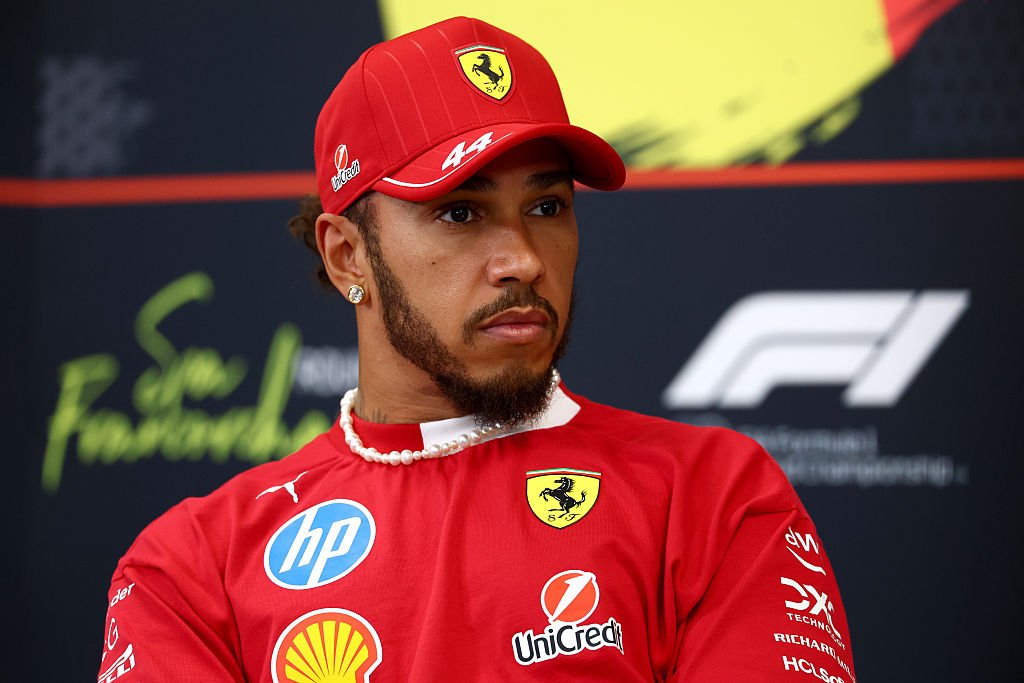Understanding the Dynamics of Lewis Hamilton’s Frustration in the Recent Grand Prix
Lewis Hamilton’s performance during the recent Hungarian Grand Prix weekend has sparked a wave of discussion and analysis, particularly regarding his mental state and the implications for his future with the team. Hamilton, a seven-time world champion, expressed significant frustration following a series of disappointing outcomes, leading to speculation about his motivation and commitment to the sport. In this article, we will delve into Hamilton’s sentiments, the reactions from his team principal, Fred Vasseur, and the broader context of competition in Formula 1.
The Context of Hamilton’s Comments
During the qualifying rounds, Hamilton faced a challenging situation, ultimately finishing in Q2 and feeling compelled to label his performance as “absolutely useless.” This self-critical remark came after watching his teammate, Charles Leclerc, secure pole position, which only heightened Hamilton’s frustration about his own lack of competitive edge. He openly suggested that Ferrari might need to consider a change in drivers, highlighting the intense pressure that comes with high-stakes racing and the fierce competition among elite drivers.
Hamilton’s disappointment didn’t end with qualifying. He finished the race in 12th place, a position he had started from, and reiterated his earlier comments about his performance. When asked if he would adjust his perspective, he maintained his stance, indicating that his feelings were valid and rooted in the current circumstances of the team.
Insights from Fred Vasseur
Fred Vasseur, the principal of the Ferrari racing team, acknowledged Hamilton’s frustration but emphasized that this should not be misconstrued as a lack of motivation. In Vasseur’s view, Hamilton’s emotions are a natural response to the pressures of racing. He stated, “I don’t need to motivate him. Honestly, he’s frustrated, but not demotivated. It’s a completely different story.” This distinction is crucial because it highlights the difference between a driver feeling challenged by circumstances and a driver losing their passion for the sport.
Vasseur further elaborated on the nature of competition in Formula 1, noting that the emotional responses of drivers, including Hamilton, are common in high-pressure situations. He pointed out that racing inherently comes with a rollercoaster of emotions, especially after a race or qualifying session where expectations may not have been met.
The Competitive Landscape of Formula 1
This season’s competitive landscape in Formula 1 is markedly different compared to previous years. Vasseur noted that the tight nature of the championship has made it increasingly difficult for drivers to maintain consistency in performance. He drew parallels to Max Verstappen’s performance, who finished ninth after a challenging qualifying session, illustrating how even the best drivers can struggle when the competition heats up.
In such a competitive environment, small miscalculations or decisions can significantly impact a driver’s finishing position. Vasseur reflected on the strategies employed during the race, particularly the decision to start on hard tires. This decision was a calculated risk, aimed at gaining an advantage in a race where many variables come into play. However, it backfired, leading to lost positions and further complicating the race strategy.
The Psychological Aspect of Racing
The mental aspect of racing cannot be overstated. Drivers like Hamilton are not only battling with their competitors on the track but also with their own expectations and emotions. The pressure to perform at the highest level can lead to intense feelings of frustration and self-doubt, especially when results do not align with the driver’s capabilities or ambitions.
Hamilton’s candid remarks about feeling “useless” after the qualifying round reflect a deep connection to his performance standards. For a driver of his caliber, every race is a test of skill, strategy, and psychological resilience. The fact that he still professes love for the team, despite his frustrations, underscores the complicated relationship athletes have with their performance and the sport itself.
The Role of Team Dynamics
Team dynamics play a crucial role in shaping a driver’s experience and performance. Vasseur’s comments about understanding Hamilton’s frustrations also highlight the importance of communication and support within the team. In high-pressure environments like Formula 1, drivers need to feel that their concerns are heard and validated.
The relationship between Hamilton and the Ferrari team is particularly noteworthy, as Hamilton’s stature in the sport means that his feedback carries weight. Vasseur’s acknowledgment of Hamilton’s feelings is an essential element in fostering a positive team environment, where drivers can express their frustrations without fear of misunderstanding or backlash.
Moving Forward: Strategies and Adjustments
Looking ahead, it is clear that both Hamilton and the Ferrari team will need to reassess their strategies moving forward. The tight competition means that every decision, from tire selection to race strategy, needs to be meticulously planned and executed. Vasseur’s insights into the need for corrective measures are crucial for the team’s future success.
The ability to adapt to changing circumstances during a race is vital. This includes making real-time decisions based on performance data and competitor actions. The Ferrari team, under Vasseur’s leadership, will likely focus on refining their approach to ensure they can capitalize on the advantages of their car’s performance while minimizing risks associated with strategic choices.
Conclusion
In conclusion, Lewis Hamilton’s recent expressions of frustration during the Hungarian Grand Prix provide a window into the complex interplay of emotions, competition, and team dynamics in Formula 1. The insights from Fred Vasseur offer a valuable perspective on how to navigate these challenges within the high-stakes world of racing. As the season progresses, both Hamilton and the Ferrari team will need to harness their collective strengths to overcome obstacles and aim for success on the track. The journey ahead will undoubtedly be filled with both challenges and opportunities for growth.
